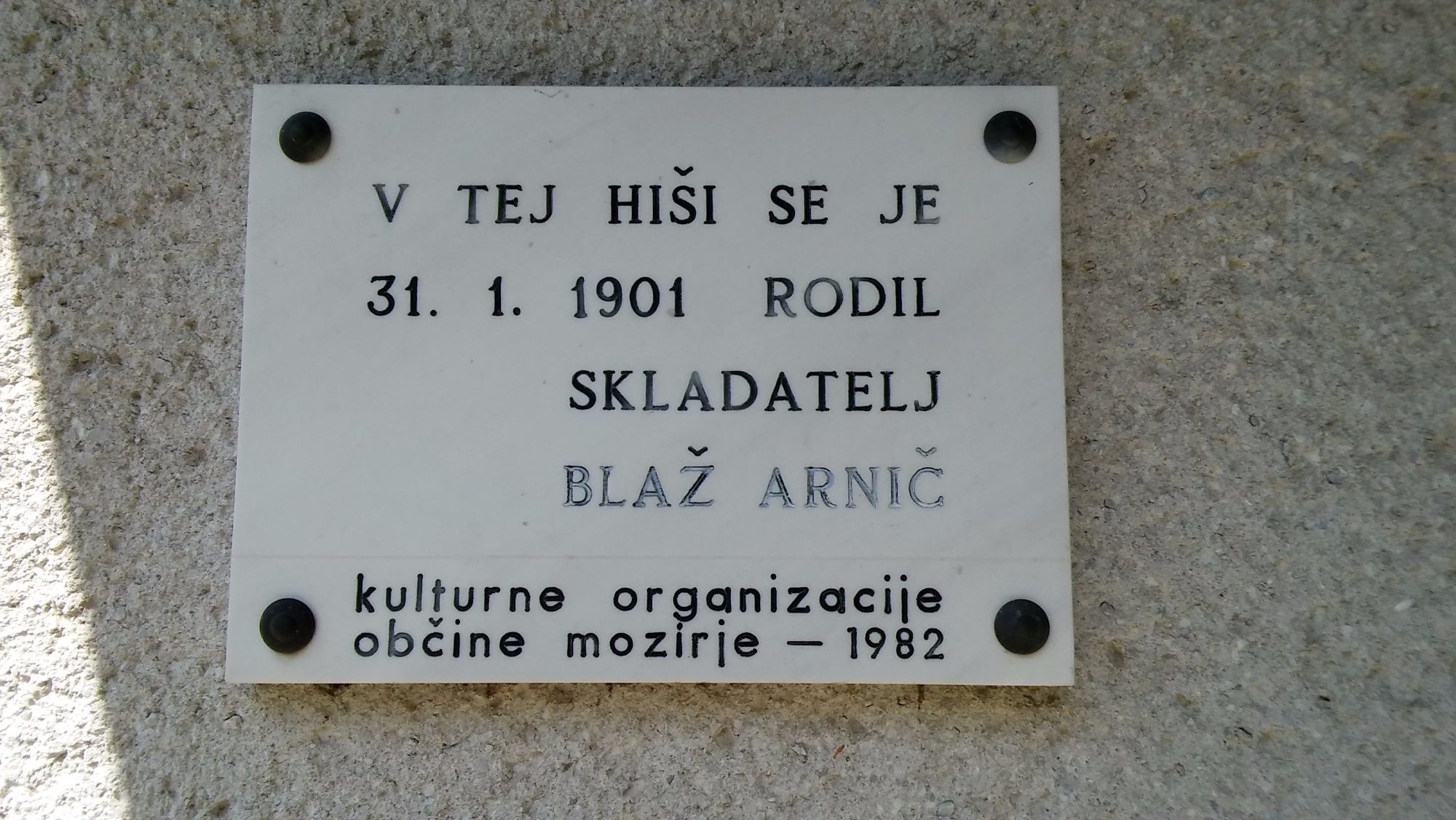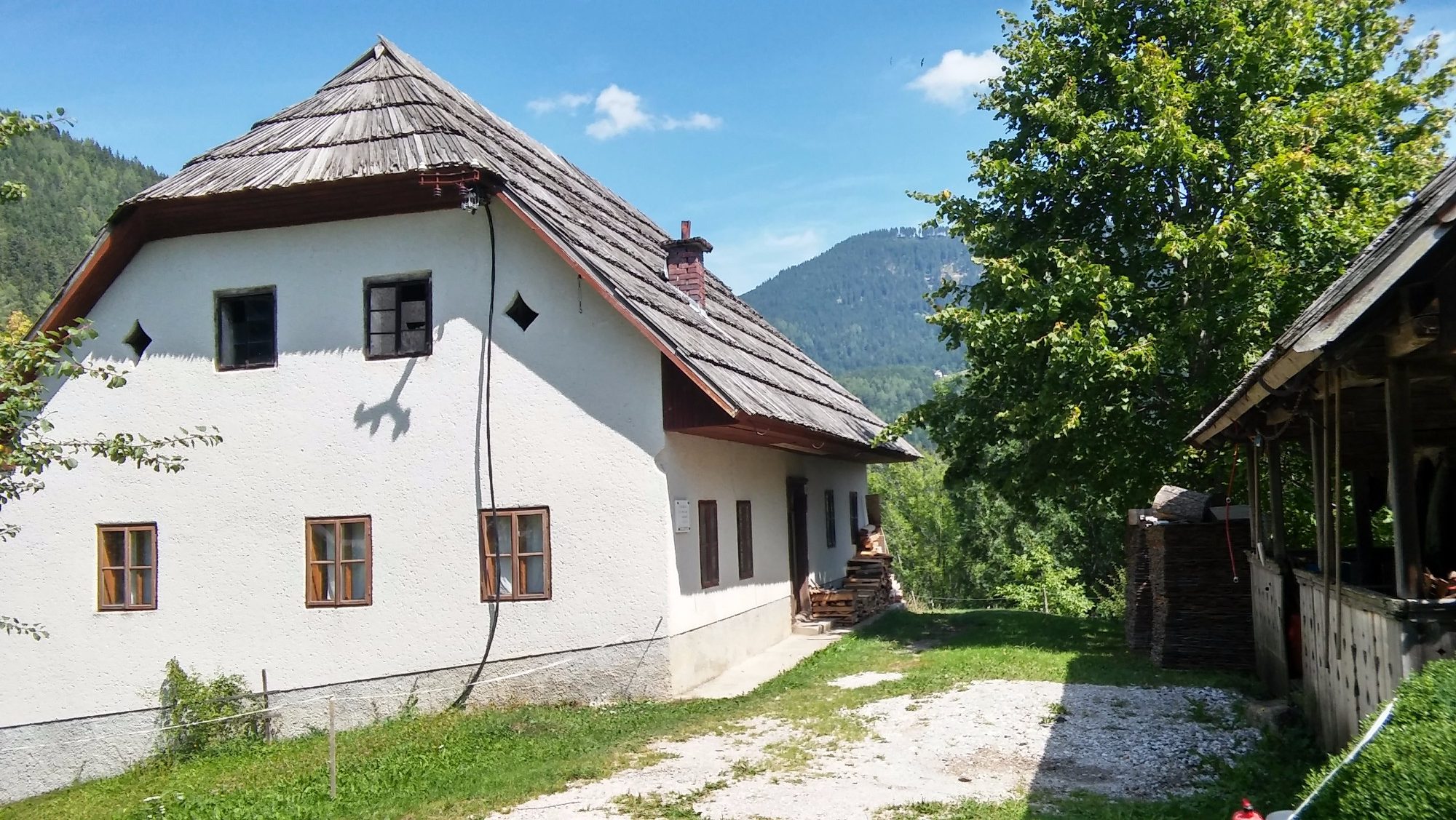Constructed in the second half of the 19th century, the house where Blaž Arnič was born in 1901 stands in Strmec. The single-storey building with a rectangular ground plan has been designated as a Slovenian cultural monument.
Blaž Arnič
Blaž Arnič (1901–1970) was a Slovenian composer and music teacher. Besides scoring choral songs as well as chamber and film music, the main achievement of Arnič’s career was his orchestral output. A distinctive symphonist, his symphonies, symphonic poems and concertos reflect the predominant musical trend of his generation – artists emerging after 1945, among whom Arnič asserted himself as one of the most influential figures of post-war musical life in Slovenia.
Arnič first savoured the beauties of music at home, by teaching himself the accordion. Later on, he went to Ljubljana to attend the Organ School headed by Stanko Premrl. In 1926, he enrolled in the composition class of the influential composer Lucijan Marija Škerjanc, at the same time pursuing further organ studies with Premrl at the Conservatory of Music in Ljubljana. Subsequently, he honed his composing skills at the Vienna music conservatory under composers Egon Lustgarten and Eugene Zadór, who had a profound influence on Arnič’s work. Arnič particularly strove to emulate Zadór, whose compositions show a marked tendency towards incorporating folk motifs.
Returning to Ljubljana, Arnič taught piano, conducted choirs and gave organ concerts, and between 1937 and 1938 went on a sabbatical leave to study in Warsaw, Krakow, and Paris, where his mentor was the composer and conductor Rhené-Baton. Between 1940 and 1943, he taught music theory subjects at the Ljubljana Academy of Music’s affiliated secondary school, and from 1945 until his death, he taught composition as a full professor at the Academy of Music. In espousing late romanticism, Arnič’s pedagogical strivings, alongside those of Škerjanc and Kozina, crucially affected the course of stylistic trends among Slovenian post-war composers.
With the exclusion of opera, his oeuvre includes all areas of composition. However, Arnič’s chamber and choral works are eclipsed by his symphonic music, to which Arnič, following the example of composers of late romanticism, ardently devoted most of his creative energies. His nine symphonies and numerous tone poems reflect the influences of Bruckner and Wagner, although Arnič denied being influenced by them. He tended to integrate elements of folk music into his compositional fabric, with the aim of infusing his works with an expression of national allegiance.
The themes that Arnič addressed in his works include religious motifs and the tragic realities of war, while love for the natural beauties of his native soil and its people is a theme that surfaces repeatedly in his work. A similar spirit pervades his symphonic poem Gozdovi pojejo (The Forests Sing, 1945), which earned him the 1947 Prešeren Award, the highest national award for achievement in arts.
In terms of morphology, Arnič’s symphonic compositions display freedom of form utilised with a view to alluding also to the piece’s programmatic, extra-musical narrative. Arnič’s musical texture is structured wholly traditionally – apart from instances of mosaic structure –, adopting the sonata form more or less freely.
Valens Vodušek, Arnič’s contemporary, an ethnomusicologist and critic, saw him as the first and finest Slovenian symphonist, while composer Vilko Ukmar considered Arnič, whose works represent the core of Slovenian concert repertoire, to be a pivotal figure in Slovenian culture in general. Today, Arnič is deemed to be a composer who remained faithful to the postulates of the romantic idiom, paying no particular heed to contemporary compositional trends. It is undeniable that Arnič’s symphonism, along with that of Kozina and Škerjanc, filled a significant gap in Slovenian twentieth-century orchestral music.
Anja Biščak


